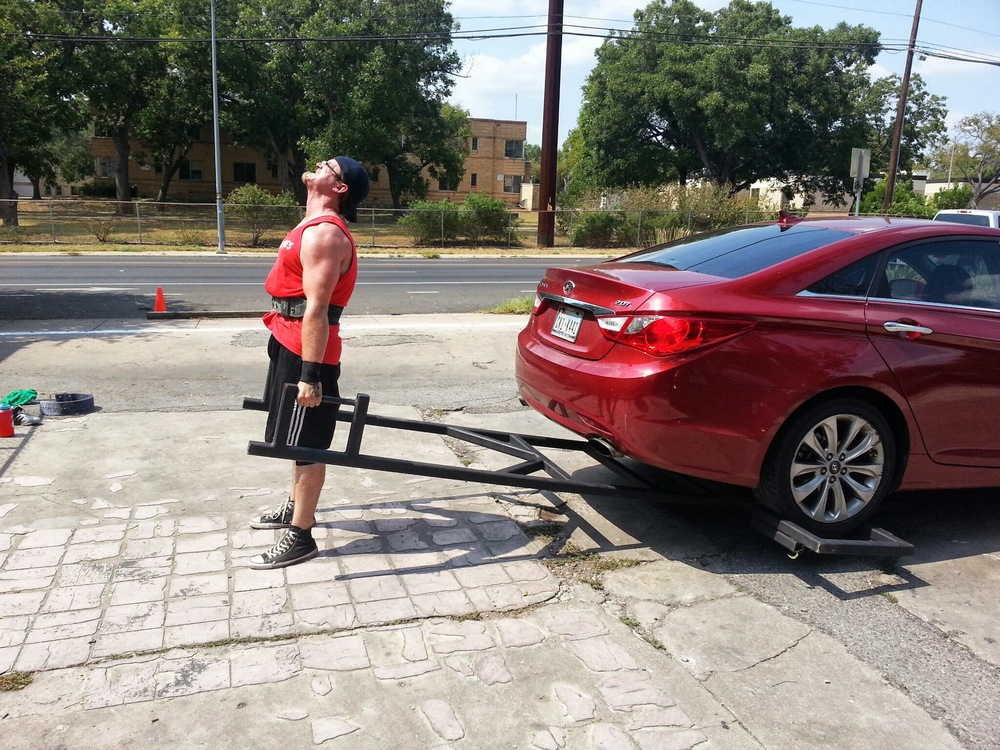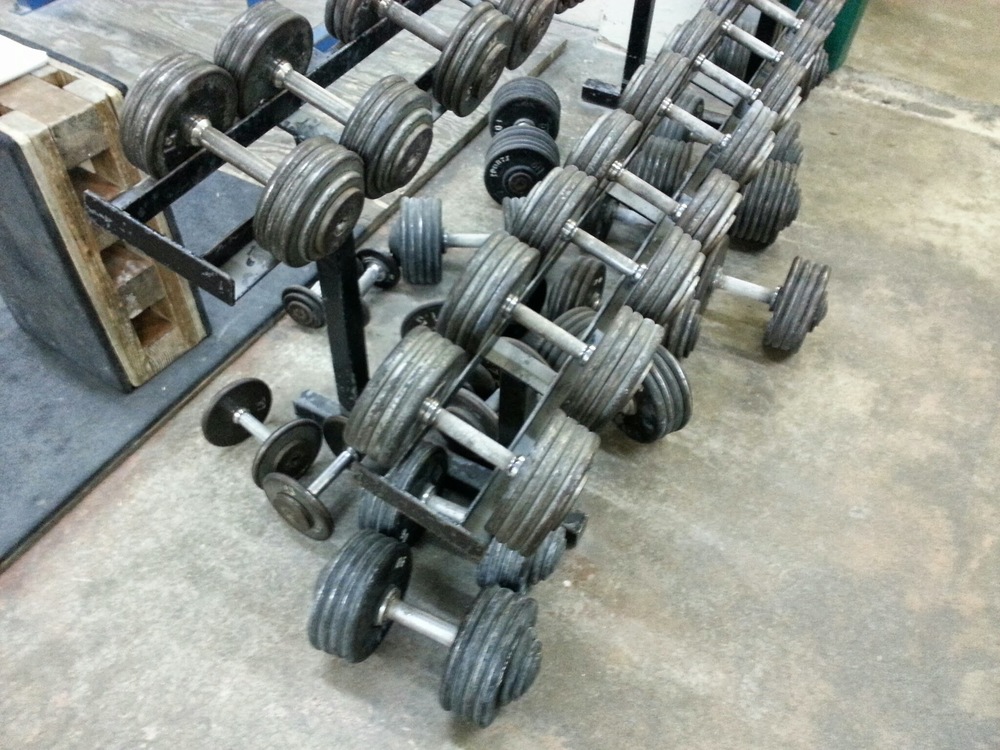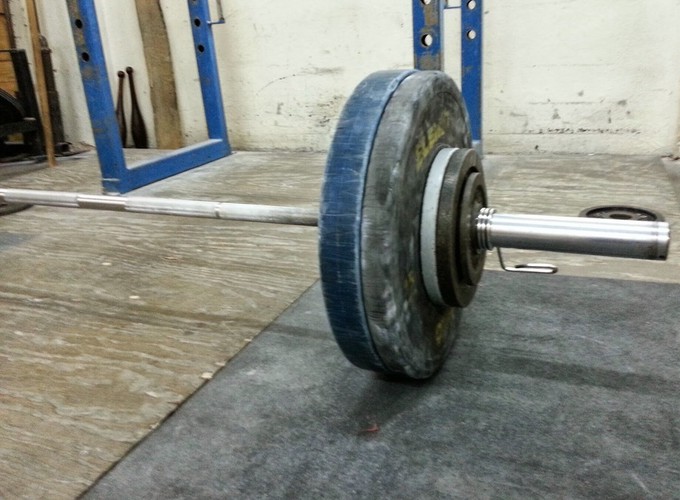For the first forty years of my life, I thought lifting weights was for meatheads. If you lifted weights, my thinking went, you cared more about your looks than your health or fitness level. Actually, not looks even, just sheer size. I was convinced that my fitness regimen of endurance training (running, cycling, walking), flexibility (yoga), and basic whole-body movements (more yoga) was far superior to stupidly lifting weights in a gym. I mean, look at those guys1 in the gym: they take a barbell, lift it five times, and then they take a five minute break. Do they even break a sweat? I don’t call that exercise, I call that sitting around on your lazy behind. Only when I started to read up on exercise physiology did I realize that lifting heavy is an extremely beneficial activity. Further, it is likely the most important type of exercise we can engage in, in particular as we grow older. And those five-minute breaks are absolutely necessary if you’re doing it right, in particular if you care more for strength than size.
Before I continue, though, a word of clarification: While the title of this post says “lift weights,” what really matters is that one engages in resistance training, i.e., putting heavy loads onto the muscles, tendons, and bones. Conventional resistance training involves barbell work, e.g. the barbell squat or the deadlift. However, other forms of exercise can be resistance training as well. For example, there are many excellent bodyweight resistance exercises. If you’re regularly cranking out planche pushups, one-arm chins, or one-arm handstands, you probably don’t have to pick up a barbell anytime soon. To find out whether a particular exercise can be considered resistance training for you, find out how many repetitions you could do at most. If you can’t do more than about eight to ten repetitions, you’re in the resistance range. For example, if the max number of pushups you can do in one go is four, pushups are a viable resistance exercise for you. But if you can easily crank out twenty, pushups are an endurance exercise for you and you have to move on to something harder for resistance work.

So why should you do resistance training? First, only heavy resistance training can actually activate and train all muscle fibers, including the strongest fast-twitch fibers. If you go jogging for 30 minutes, even at a pretty fast pace, you may feel tired afterwards, your legs may even be sore, but a substantial fraction of your leg muscle hasn’t actually done anything. By comparison, a single set of five barbell squats, at a weight that you can lift only about five times in a row, will have hit nearly every single muscle fiber in your leg muscles. Thus, you get way more exercise bang for your buck. (Incidentally, that’s why you need a few minutes break between sets of heavy resistance training. The exercises truly are that exhausting.) Second, there is better transfer from strength to endurance than the other way round. Once you have strength, it’s relatively easy to build endurance on top. But just because you have endurance doesn’t mean you can easily add strength. In simple terms, if you can do a one-arm pushup, you could easily acquire the ability to do 50 regular pushups in a row. On the flip side, being able to do 50 regular pushups doesn’t do much for your ability to do one-arm pushups. (If you want to see this principle in action, check out this video of a woman first squatting a barbell weighing over twice(!) her own bodyweight and then squatting a barbell weighing her own bodyweight 33 times. I’m sure she could easily do a couple hundred unloaded squats.)
I would also argue that strength has much more every-day applicability than endurance. When was the last time you had to run at a sustained effort for 30 minutes, outside an organized race? At least for me, that’s not something I encounter frequently (or ever). But carrying five-gallon water containers from the car, putting my luggage into the airplane overhead bin, moving furniture around while cleaning the house, those are things I do all the time. And every bit of strength I have makes those tasks easier.

One of the unique benefits of resistance training, one that cannot be realized any other way, is increased bone density. Bones strengthen when they are subjected to load, and they wither away in its absence. (Incidentally, that’s why astronauts experience substantial loss of bone mass during extended stays in zero g.) If you are young and engage in serious resistance training, you will build a strong skeletal structure that will serve you well for a life-time of activities. And if you are old and engage in serious resistance training, you will maintain and possibly even regain bone mass. By contrast, if you don’t do any exercise at all, or the only exercise you ever do is riding a stationary bike, you will most certainly experience substantial bone loss as you age.
Many people who are not familiar with weight lifting are concerned of the possible injury risks. They picture themselves crushed under a 200lb barbell and can’t imagine how anybody in their right mind would subject themselves to such a risk. However, weightlifting is fairly safe when done properly, i.e., with good form and using weights that are appropriate to the strength level of the athlete. Compared to other physical activities one could engage in (soccer, football, cycling on public roads), weightlifting does not cause more serious or more frequent injuries. Even among people who lift a lot and lift very heavy, any injuries that occur are usually minor (<1 day of training missed). In the elderly, strength training caused about as many injuries as walking and many fewer than jogging.
The only downside to heavy lifting is that you’ll look like Arnold Schwarzenegger. Nah, you won’t. Nobody looks like Arnold by accident. Not even Arnold. That look requires years of dedicated effort, very high-volume training, superior genetics, and the right pharmacological support. If you’re just a regular guy or gal going to the gym a few times a week, you’ll look fit, but you won’t look like the Michelin man.
For the purpose of this topic, we can safely assume that a person lifting weights in a gym is a man. There’s probably twenty guys lifting weights to one woman doing so. If you’re a woman who is seriously into lifting, I tip my hat to you, and you know what I’m talking about.↩︎
